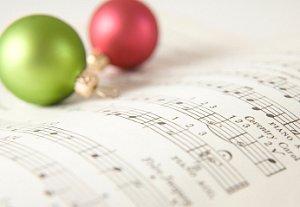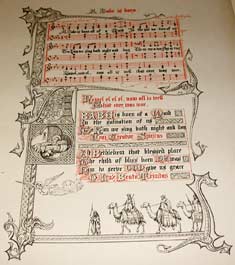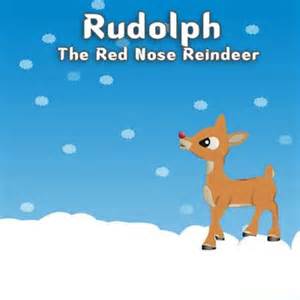Christmas Carols
The earliest songs we would recognize as carols were sung by people dancing around stone circles at the Winter Solstice, which is the shortest day of the year. The practice soon spread to other parts of the year. The word "carol" originally meant something close to "singing while dancing." This was long before Christmas was celebrated.
The earliest Christmas carols were written and sung in Latin. Most people at the time didn't know Latin so couldn't join in the singing or even understand the words being sung.
 In the early 13th Century, Francis of Assisi began organizing Nativity Plays, which told the story of the birth of Jesus, Christianity's central figure. In these Nativity Plays, put on in Italy to start with, the performers sang songs to tell the story. These songs were called canticles. The difference with these songs was that they were not in just Latin but in other languages, such as Italian.The Nativity Plays and their accompanying carols became popular in Italy and, during the next few hundred years, spread to other European countries, including France, Germany, and Spain. With the spread geographically came a corresponding spread in translation.
In the early 13th Century, Francis of Assisi began organizing Nativity Plays, which told the story of the birth of Jesus, Christianity's central figure. In these Nativity Plays, put on in Italy to start with, the performers sang songs to tell the story. These songs were called canticles. The difference with these songs was that they were not in just Latin but in other languages, such as Italian.The Nativity Plays and their accompanying carols became popular in Italy and, during the next few hundred years, spread to other European countries, including France, Germany, and Spain. With the spread geographically came a corresponding spread in translation.
Carols became popular in England as well but were banned in 1647 by the government. English people still sang carols in secret, and the ban was lifted not many years later.
The tradition of going door-to-door singing Christmas carols is several hundred years old, with groups of people called "Waits" taking their musical Christmas cheer through the towns and villages of Europe. They were called "Waits" in conjunction with "Waitnight" or "Watchnight," two names for Christmas Eve that evoked the Biblical story of shepherds who were watching over their sheep when they heard of the impending birth of Jesus. Another tradition holds that watchmen guarding city walls would pass the time singing carols to themselves and to passers-by.
Another variant was "wassailers," a name preserved in the title of the carol "Here We Come A-wassailing." The tradition also arose of groups singing, either in public places or at others' houses, in exchange for food or gifts.
It eventually became the practice to collect carols together in books. Some books contained words and music; others contained just the words. People wrote new carols as well.
The earliest Christmas carols were deeply religious, filled with reverence and many mentions of Christian imagery associated with holy traditions. In the 20th Century, carol-writers began to include non-religious references in their holiday songs.
Today, most Christian churches will feature Christmas carols during services in the weeks leading up to Christmas, as well as on Christmas Eve and/or Christmas Day. Nearly all carols sung in churches are of the religious variety.
A short list of Christmas carols featured in churches today would include the following:
 "Joy to the World" (1719): Isaac Watts, sometimes known as the "Father of Hymns," wrote the words, based on the Bible's Psalm 98, and Lowell Mason the music, after a melody by George Friedrich Handel. The melody to the carol is generally known as "Antioch."
"Joy to the World" (1719): Isaac Watts, sometimes known as the "Father of Hymns," wrote the words, based on the Bible's Psalm 98, and Lowell Mason the music, after a melody by George Friedrich Handel. The melody to the carol is generally known as "Antioch."- "O Come All Ye Faithful" (1743): Written originally in Latin (Adeste Fideles), this carol is attributed to John Reading in the early 1700s. The English words are thought to have come from the Rev. Frederick Oakley, in 1841.
- "Silent Night" (1818): Austrians Joseph Mohr (words) and Franz Gruber (music) composed the original version, in German ("Stille Nacht"). Mohr was a priest and Gruber an organist. An English version came along in 1863.
- "God Rest Ye Merry Gentlemen" (1833): Written long before but first published in that year in Christmas Carols Ancient and Modern, a collection of seasonal carols compiled by Davies Gilbert and William Sandy. Made famous initially by being included in Charles Dickens's A Christmas Carol.
- "Hark the Herald Angels Sing" (1840): Music comes from a cantata by Felix Mendelssohn, with words written in 1739 by Charles Wesley, brother of Methodist Church founder John Wesley.
- "It Came Upon the Midnight Clear" (1849): Words written by Edmund Sears, who set the words to a melody by Richard Storrs Willis.
- "Good King Wenceslas" (1853): Written by John Mason Neale, this carol tells the story of a king who braves bitter winter weather to give to the poor. Neale's inspiration was the real-life Duke Baclav of Bohemia. This carol is associated with the Feast of Stephen, which takes place on December 26. The tune is based on an earlier carol associated with spring.
- "We Three Kings of Orient Are" (1857): Words and music by John Henry Hopkins, Jr., a minister who wrote the song for one of his church's Christmas pageants. The song evokes the story of the three "wise men," or kings who the Bible says came to visit the baby Jesus.
- "Away in a Manger" (1885): Both the author and composer are unknown. The song first appeared in Little Children's Book for Schools and Families.
- "Do You Hear What I Hear" (1962): married couple Noel Regney and Gloria Shayne Baker wrote this song as an appeal for peace during the Cuban Missile Crisis.
- "The First Noel": Experts can't agree on where the melody came from or, really, how old the words are. What is generally agreed on, however, is that the last word in the title is more properly Nowell, which is close to "natalis," a Latin word for birth. The words known today were revised slightly by Gilbert and Sandy and published in Christmas Carols Ancient and Modern.
A short list of Christmas carols of the nonreligious variety would likely include the following:
- "Jingle Bells" (1857): written by church choir director James Lord Pierpont and published originally as "One Horse Open Sleigh," as a song to sing at Thanksgiving in honor of the annual sleight races in Pierpont's town of residence, Medford, Mass.
- "Winter Wonderland" (1934): Felix Bernard wrote the music for his friend Richard B. Smith, who was moved to write the words after being stuck inside with a long illness and then seeing out his window scenes of fun in the snow.
-
 "White Christmas" (1942): written by famed songwriter Irving Berlin and most famously sung by Bing Crosby, whose version of the holiday staple is said by the Guinness Book of Records to be the best-selling single version of any song ever.
"White Christmas" (1942): written by famed songwriter Irving Berlin and most famously sung by Bing Crosby, whose version of the holiday staple is said by the Guinness Book of Records to be the best-selling single version of any song ever.
- "I'll Be Home for Christmas" (1943): written in the middle of World War II and inspired by the wishes of overseas troops; words by James Kimball ("Kim") Gannon and music by Walter Kent.
- "Let It Snow! Let It Snow! Let It Snow!" (1945): Sammy Cahn wrote the words and Jule Styne the music for this song that doesn't mention Christmas at all.
- "Here Comes Santa Claus" (1947): Oakley Haldeman wrote the music for famed "Singin' Cowboy" Gene Autry, who got the idea for the words after hearing the words shouted by the crowd at a Los Angeles Christmas parade.
- "Rudolph the Red-Nosed Reindeer" (1949): Robert L. May wrote the story of the brave and true Rudolph in the 1930s. His brother-in-law Johnny Marks wrote the song, which was made famous by Autry.
- "Frosty the Snowman" (1950): Steve Nelson and Walter Rollins wrote this ditty, which was first recorded by Autry.
- "Silver Bells" (1951): Ray Evans wrote the words and Jay Livingston the music for this holiday favorite, first used in a Bob Hope movie titled The Lemon Drop Kid.
- "Holly Jolly Christmas" (1964): written by Johnny Marks, it became popular after Burl Ives sang it in the movie Rudolph the Red-Nosed Reindeer.
Christmas carols are routinely sung inside and outside of churches. Many communities feature carol-singing events in the weeks leading up to Christmas. One well-known celebration is called "Carols by Candlelight," which is a nighttime event in which participants hold candles to provide the light needed to see the words and music on the songsheets they are holding. (This practice of holding candles to provide light in an otherwise dark location is common in churches during this time as well.)